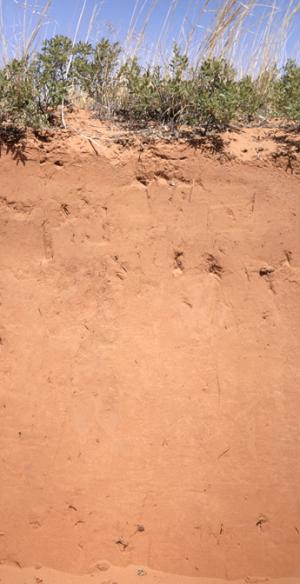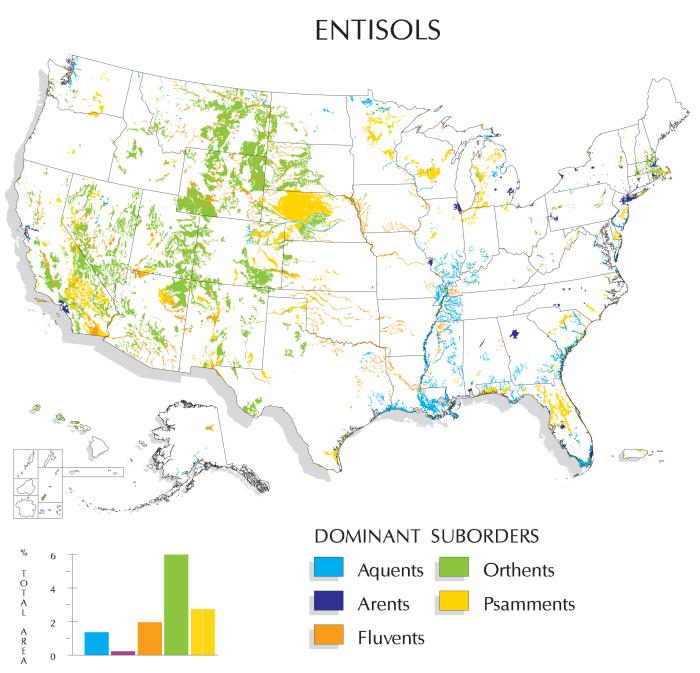Entisols
Entisols are soils that show little or no evidence of pedogenic horizon development.

The central concept of Entisols is that of soils that have little or no evidence of development of pedogenic horizons. Many Entisols have an ochric epipedon and a few have an anthropic epipedon. Many are sandy or very shallow.
Dominant Suborders
Aquents
Aquents, or the wet Entisols, are widely distributed. They dominate some of the delineations along the southern Atlantic and gulf coasts and on the flood plains along the Mississippi River and along other rivers and streams. Some Aquents are forming, mostly in sandy deposits, in other parts of the country. Most of the soils are forming in recent sediments. They support vegetation that tolerates permanent or periodic wetness. They are used mostly as pasture, cropland, forest, or wildlife habitat.
Arents
Arents do not have diagnostic horizons because they have been deeply mixed by plowing, spading, or other methods of moving by humans. They are important soils for irrigated crop production in California. Small areas also occur throughout the country. Arents are used mostly as cropland, urban land, or pasture. Some are used as wildlife habitat.
Fluvents
Fluvents are the more or less freely drained Entisols that formed in recent water-deposited sediments on flood plains, fans, and deltas along rivers and small streams throughout the country. Some of the largest areas are on the flood plains along the Mississippi River. Most Fluvents are frequently flooded, unless they are protected by dams or levees. Stratification of the materials is normal. Most Fluvents are used as rangeland, forest, pasture, or wildlife habitat. Some are used as cropland.
Orthents
Orthents are mainly in the Western States. They are commonly on recent erosional surfaces. Orthents are used mostly as rangeland, pasture, or wildlife habitat.
Psamments
Psamments occur throughout the country. Some of the largest areas are in Nebraska, California, Minnesota, Wisconsin, Michigan, Arizona, and Florida. These soils are sandy in all layers. They are among the most productive rangeland soils in some arid and semiarid climates. Some Psamments that are nearly bare are subject to soil blowing and drifting and provide poor support for wheeled vehicles. Psamments are used mostly as rangeland, pasture, or wildlife habitat.

Entisols have no diagnostic horizons. Some Entisols have steep, actively eroding slopes, and others are on flood plains or glacial outwash plains that receive new deposits of alluvium at frequent intervals.


